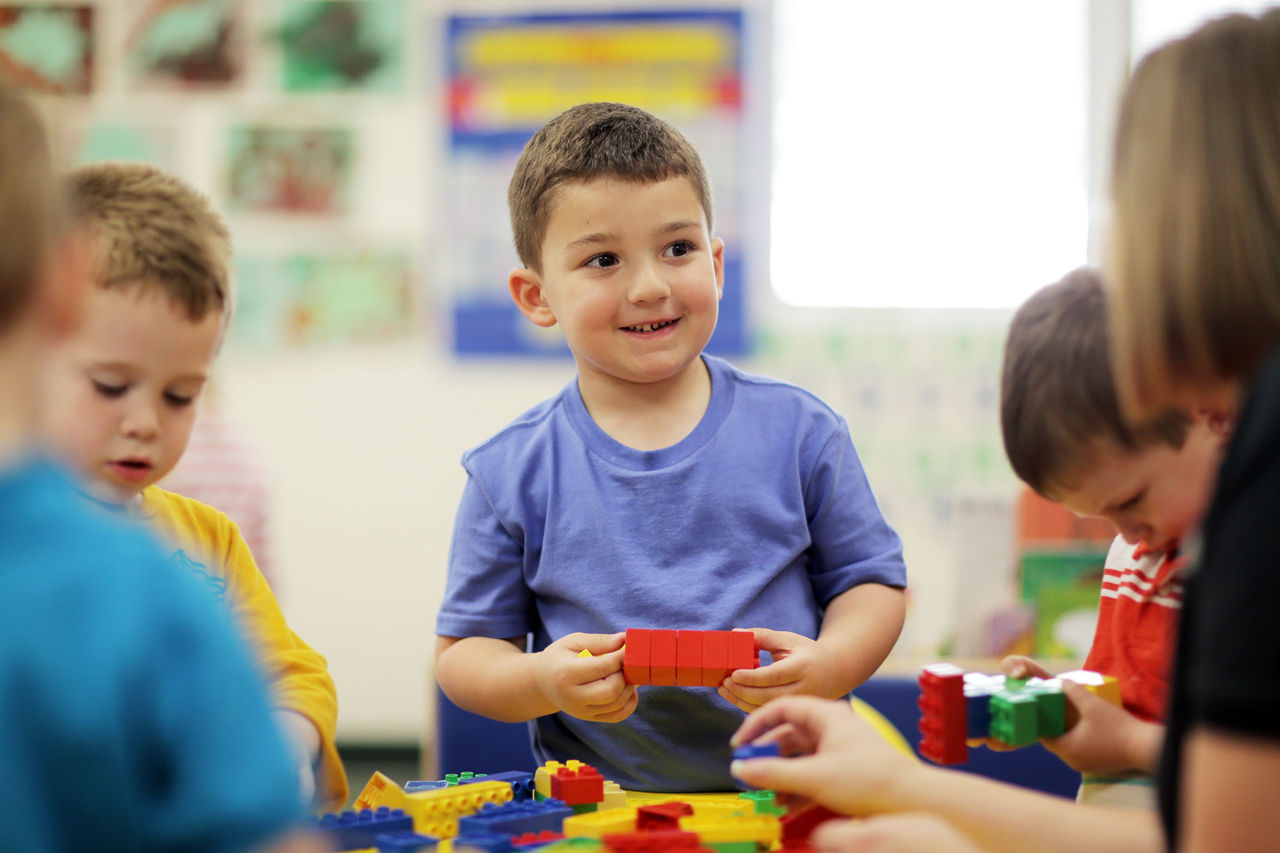We’ve all heard the adage, “sharing is caring.” Well, that’s not always true for little ones. You might hear the word, “mine!” before something is snatched away, and, that’s okay because leaning to share is tough. Let’s explore different stages of development and how you can encourage your child to learn to share.
Understanding the Developmental Stages of Sharing
Sharing naturally evolves as a childs grows. Between the ages of one and two children don’t understand the concept of sharing. At this age, don’t force children to share — they haven’t developed empathy yet and can’t understand someone else’s perspective. Just pack a few extra toys to help prevent any fighting.
Between ages two and three, children are capable of empathy, which means they will begin to understand sharing and taking turns. They become increasingly aware that others have feelings too and have a better understanding of why they should share. With patience and consistent coaching, your child will learn how to share.
The Role of Parents and Caregivers in Fostering Sharing Skills
Parents and caregivers play a crucial role in the development of sharing skills for their children. Not only do they provide the necessary guidance but can also demonstrate best practices.
Set a Positive Example: Model Sharing Behavior
Highlight sharing at home, so your child can learn by example. Children will see your behaviors and will want to copy you. Using “share” in your everyday vocabulary helps your child see it is a normal part of their routine.
Teach Empathy: Build Understanding and Compassion
Teaching empathy to young children is challenging but not impossible, and it’s a requirement for learning how (and why) to share. When your child does share, reward them with encouragement. Highlight when others share, too. If you notice during a play session that your child’s friend is sharing, point out how nice it was for their friend to share. Ask how your child felt when their friend shared and talk about how happy it makes others.
Strategies for Promoting Sharing in Children
Whenever possible, practice sharing with your child. Share a puzzle together and take turns placing pieces, or color together and share favorite crayons. No matter the activity always remember, when your child does share, praise their efforts!
Establish Clear Expectations and Rules for Sharing
If your child has a playdate, have them pick out toys they’d enjoy sharing with their friend. If there are toys they aren’t ready to share, talk through why. If they are still not ready after the discussion, put the toy aside in a safe space.
Promote Communication and Problem-Solving Skills
Situations may arise where your child or their friends don’t want to share. Use this experience to discuss how perhaps that toy is special to their friend and encourage your child to find another toy or activity that can be shared between the two of them.
While teaching your child to share make sure to encourage patience. Teach them how to ask their friend if they may have a turn. Let them know that it may take a few minutes before they can play with the toy. Additionally, teach your child that saying, “no” is okay, especially when it’s a child’s personal item. Allow space for children to attempt to resolve sharing issues between them to help build their problem-solving skills.
Use Positive Reinforcement
Positive reinforcement can be as simple as a high five or pat on the back. Try to call out how sharing makes not only themselves but others feel. Do they like when someone shares with them? Isn’t it nice to make others feel happy too? Sharing can be its own reward, and it's important to highlight that. When they see sharing can be fun, this type of positive experience will encourage them to share more on their own.
Addressing Challenges and Common Obstacles to Sharing
Try to prepare your child for what they can expect ahead of a playdate. Let them know that they may need to share or wait for a turn. If you do need to step in and address conflict, it is important that the consequences are specific to the item in question. If your child and friend are arguing over a toy, take the toy away and say something like, “It looks like you both really want to play with this toy. If you aren’t able to take turns now, we’ll need to put this away until you both feel ready to share.”
If your child is struggling with sharing, try asking questions like, “How would you feel if you weren’t allowed to take a turn with the crayons?” Encourage them to think about sharing from another person’s point of view.
Don’t get discouraged if you encounter resistance. Sharing is a complex process that takes time to learn!
Dealing with Possessiveness and Attachment to Possessions
It’s possible that your child may have developed some possessiveness over their items, which is a totally normal part of their development. In exploring any possessiveness your child may exhibit, try the following:
Talk to them about why that item is special. Ask why they are not ready to share. Talk through it and if they are still not ready to share, let them know it is ok and put the toy in a safe spot. Check in when them gently and encourage them to try when they are ready. Be sure that when they are ready, you thank them and encourage them to do so again.
Handling Sibling Rivalry and Competition
When addressing any kind of sibling rivalry, it’s not only important they learn to share items like toys and belongings, but your time and attention as well.
Try playing games where you have to share your time equally with each child. This will help with any rivalry and encourage turn taking as well.
If there is only one most-favorite toy between siblings, try using a visual timer to encourage taking turns. Set the expectation that in five minutes it will be someone else’s turn to play with the toy.
The Long-Term Benefits of Learning to Share
Teaching your child to share provides them with the foundation they need to develop important social-emotional skills, like self-management and empathy. Then when they reach school age they will be able to develop deeper and more enriching relationships with others.




